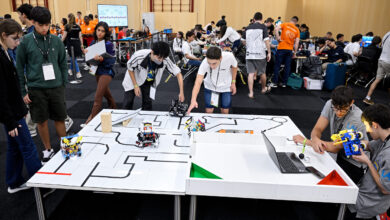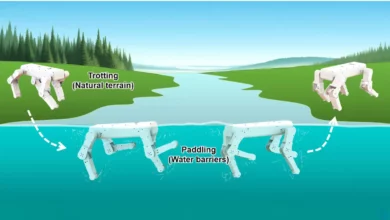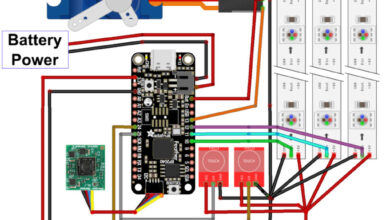Designing drones that can fly in air ducts

New research published in npj Robotics addresses the challenge of flying small quadrotors in air ducts as small as 35 cm (14 inches). This research, led by a team of researchers from Inria, CNRS, Université de Lorraine, and Aix-Marseille Université, opens a new way of accessing and inspecting highly-confined environments.
Air ducts are everywhere in modern buildings and underground networks, but are challenging to access for inspection. Their narrow dimensions and inability to support human weight prevent essential interventions to maintain air quality, heating, and air conditioning.
Small quadrotor drones offer a potential solution for exploring these air ducts because they can navigate both horizontal and vertical sections. However, they create airflows that recirculate inside the duct and destabilize the drone, creating important turbulences in an environment that has little space for error.
The team first investigated how the air circulates depending on the position of the drone in the air duct. To do so, they used a robotic arm and a force/torque sensor to measure the forces at hundreds of positions.
This first “map” of forces shows a complex aerodynamic pattern and makes it possible to identify the “unsafe” parts of circular ducts, where the air recirculations push the drone towards the walls, and a safer position, where the recirculation forces cancel out.
To maintain its position at the recommended point, the drone needs to know its current position in an environment which is typically dark and without any visual cues. The team combined small lasers and artificial intelligence (a neural network trained on motion capture data) to allow the small drone to stay in the position with the smallest turbulences, hence flying in a safer and more stable way.
The results of this research open new and promising application domains for drones in industrial inspection and public safety. The next step is to develop a more application-oriented prototype with useful payloads, like cameras, thermal cameras, or gas sensors.
More information:
Thomas Martin et al, Flying in air ducts, npj Robotics (2025). DOI: 10.1038/s44182-025-00032-5
Inria Centre at Université de Lorraine
Citation:
Designing drones that can fly in air ducts (2025, July 29)
retrieved 5 August 2025
from https://techxplore.com/news/2025-07-drones-fly-air-ducts.html
This document is subject to copyright. Apart from any fair dealing for the purpose of private study or research, no
part may be reproduced without the written permission. The content is provided for information purposes only.




